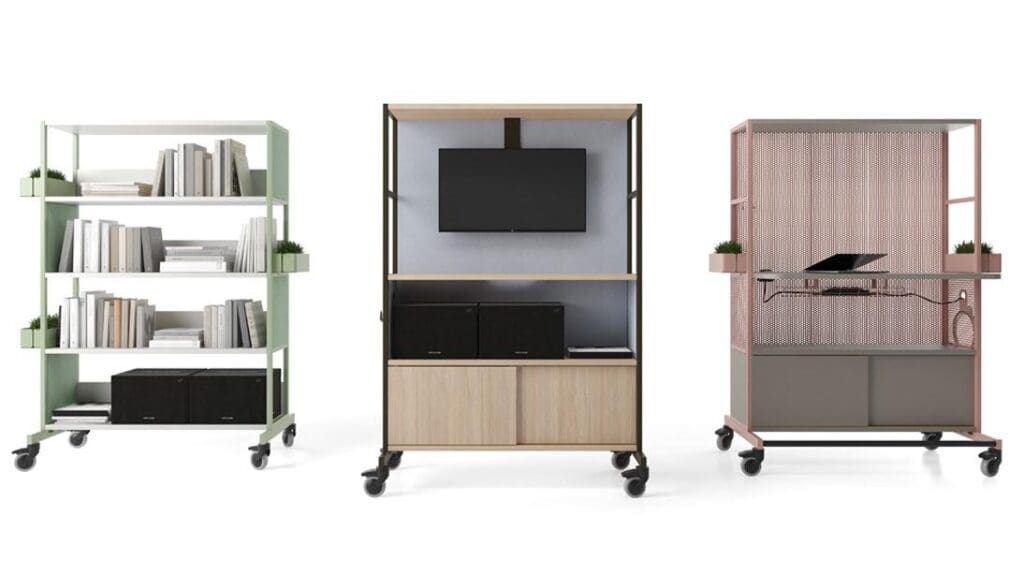Evolving Workspaces: Office Furniture Trends in 2024

As we step further into the digital age, the dynamics of the workplace continue to evolve, influencing everything from technology to office culture. One aspect that often goes overlooked but significantly impacts productivity, creativity, and employee well-being is office furniture. In 2024, we're witnessing a fascinating shift in office furniture trends, driven by a fusion of technological advancements, sustainability concerns, and a growing focus on employee comfort and flexibility. Let's delve into some of the prominent trends reshaping our workspaces this year.
Ergonomic Designs for Enhanced Comfort
In today's fast-paced work environment, where employees spend long hours seated at their desks, prioritizing comfort is paramount. Ergonomic furniture designs are gaining momentum, aimed at reducing strain and improving posture. Expect to see chairs with adjustable lumbar support, height-adjustable desks, and accessories like keyboard trays and monitor arms, all geared towards promoting a healthier and more comfortable work experience.
Multi-functional and Flexible Furniture
Flexibility is the name of the game in modern office design. With the rise of remote work and hybrid models, offices need furniture that can adapt to varying needs and spaces. Multi-functional pieces such as modular desks, convertible tables, and storage units with flexible configurations are becoming increasingly popular. These versatile solutions allow for easy reconfiguration of spaces, fostering collaboration and accommodating diverse work styles.
Sustainable Materials and Eco-friendly Practices
As environmental consciousness continues to grow, so does the demand for sustainable office furniture. Companies are increasingly opting for furniture made from recycled materials, responsibly sourced wood, and low-emission finishes. Additionally, there's a shift towards circular economy principles, with more emphasis on refurbishing and repurposing existing furniture to extend their lifespan. Expect to see an abundance of eco-friendly options that not only reduce environmental impact but also contribute to a healthier workspace.
Tech-Integrated Furniture for Seamless Connectivity
In an era dominated by technology, office furniture is getting smarter. Integration of technology into furniture pieces is on the rise, with features like built-in power outlets, wireless charging pads, and USB ports becoming standard. This seamless connectivity allows employees to stay powered up and connected without the hassle of tangled cords, enhancing productivity and efficiency in the workplace.
Biophilic Design Elements for Wellness
Bringing elements of nature into the office has been shown to have numerous benefits, from reducing stress to improving productivity and creativity. In 2024, biophilic design principles are being integrated into office furniture to create a more harmonious and wellness-oriented workspace. Expect to see furniture adorned with natural materials like wood and stone, as well as incorporating elements such as living walls, greenery, and natural lighting to blur the boundaries between indoor and outdoor environments.
Personalized and Customizable Solutions
Recognizing that one size does not fit all, office furniture manufacturers are offering more personalized and customizable solutions to cater to individual preferences and needs. From adjustable desks that can be tailored to specific height requirements to chairs with customizable upholstery options, employees are empowered to create workspaces that reflect their unique tastes and promote a sense of ownership and comfort.
In conclusion, the office furniture landscape in 2024 is characterized by a blend of functionality, sustainability, and employee-centric design. As workplaces continue to evolve, furniture trends will likely continue to adapt to meet the changing needs of modern workers. By embracing these trends, organizations can create environments that not only foster productivity and collaboration but also prioritize the well-being and satisfaction of their employees.
